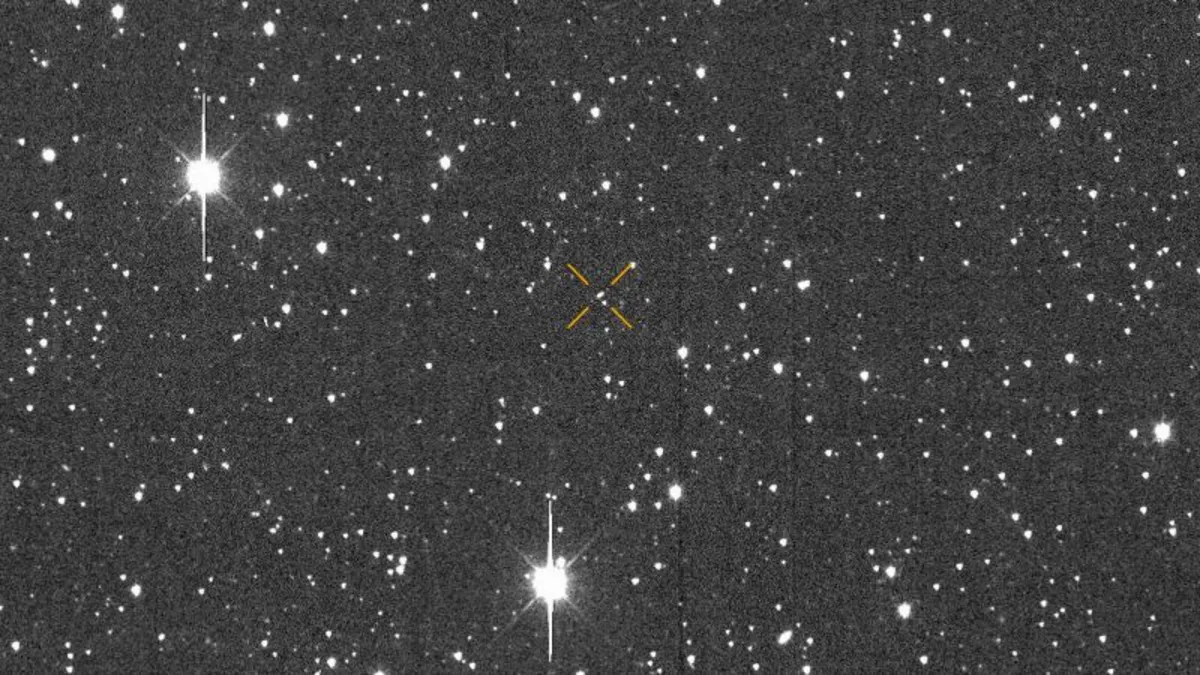
Explore the universe with news on fascinating discoveries, scientific advancements, and more by signing up for CNN's Wonder Theory science newsletter.
Asteroid 2024 YR4, once deemed the riskiest asteroid on record just last week, now has almost a zero percent chance of impacting Earth in 2032. This reassuring update comes from both NASA and the European Space Agency (ESA).
NASA's latest estimates suggest that the space rock has a mere 0.0017% chance of hitting Earth in December 2032, while the ESA's assessment shows a similar risk of 0.002%. This translates to a 1 in 59,000 possibility of impact, indicating a 99.9983% chance that the asteroid will safely pass by Earth in seven years, according to NASA. They also noted a 1.7% chance of the asteroid hitting the moon, but these slight odds pose no risk to Earth.
"When first discovered, asteroid 2024 YR4 had a very small, but notable chance of impacting our planet in 2032," NASA stated on Monday. "As observations continued to be submitted to the Minor Planet Center, experts at NASA's Jet Propulsion Laboratory's Center for Near-Earth Object Studies calculated more precise models of the asteroid's trajectory. They now confirm there is no significant potential for this asteroid to impact our planet for the next century."
Over the weekend, asteroid 2024 YR4 dropped to a ranking of 0 out of 10 on the Torino Impact Hazard Scale, a tool for categorizing potential collisions of space objects with Earth. This ranking signifies that the likelihood of a collision is zero or so low as to be effectively zero.
Asteroid 2024 YR4, detected by telescopes on December 27, 2024, is estimated to be between 131 to 295 feet (40 to 90 meters) wide, comparable to a large building, and could cause local devastation if it were to collide with Earth.
The rapid de-escalation of the asteroid’s risk assessment is due to the "unsung, meticulous work by astronomers," according to Richard Binzel, inventor of the Torino Scale and a professor at the Massachusetts Institute of Technology. "I’m pleasantly surprised that we could reduce the probability numbers so quickly," Binzel remarked.
Early last week, asteroid 2024 YR4 briefly held a record once reached by the asteroid Apophis after it was first spotted in 2004. At its peak threat level, 2024 YR4 reached a 3 on the Torino Scale, with an estimated 3.1% chance of impacting Earth in 2032, according to NASA. The ESA's observations indicated a 2.8% risk.
The narrow difference in assessments is due to the two agencies using different tools for determining the asteroid’s orbit and modeling its potential impact. However, both percentages exceeded the 2.7% collision chance previously associated with Apophis, making 2024 YR4 the most significant space rock discovered in the past two decades.
Like Apophis, the threat level for 2024 YR4 was expected to spike and then diminish as more observational data reduced uncertainties about its path. Measuring 1,148 feet (350 meters) in diameter, Apophis was once considered one of the most hazardous asteroids, warranting astronomers' attention and tracking. However, its risk level also dropped to zero after further observations clarified its orbit.
The biggest challenge astronomers face when assessing newly discovered asteroids is calculating the unknowns, including the space rock's size and orbit. Observations conducted during optimal dark sky conditions allowed astronomers to quickly decrease the risk assessment for 2024 YR4.
Key telescopes involved in tracking 2024 YR4 include the Canada-France-Hawaii Telescope, the Subaru Telescope, and Haleakala-Faulkes Telescope North, all located in the Hawaiian Islands, as well as New Mexico’s Magdalena Ridge Observatory, the Gemini South Observatory in the Chilean Andes, Arizona’s Lowell Discovery Telescope, and the Nordic Optical Telescope in the Canary Islands.
"The atmosphere above Maunakea tends to be very stable, enabling telescopes to produce very sharp images," said David Tholen, an astronomer at the University of Hawaii’s Institute for Astronomy.
Luckily, the likelihood of 2024 YR4's impact has dropped just in time. Astronomers were concerned about the space rock's trajectory, which would have taken it out of reach of ground-based telescopes from April until June 2028.